The Measurement Platform-2 (MP-2) is an advanced meter with unique selection of transient thermal conductivity sensors for a variety of applications, with a focus on primary measurements. The transient thermal conductivity sensors share similar principles of operation. The sensor wire is heated using a constant current source (q) and the temperature rise is recorded by monitoring the change in electrical resistance of the wire (THW and EFF) or by resistance temperature detector device (TLS). For samples of high thermal conductivity, the lower the slope; for samples of low thermal conductivity, the higher the slope.
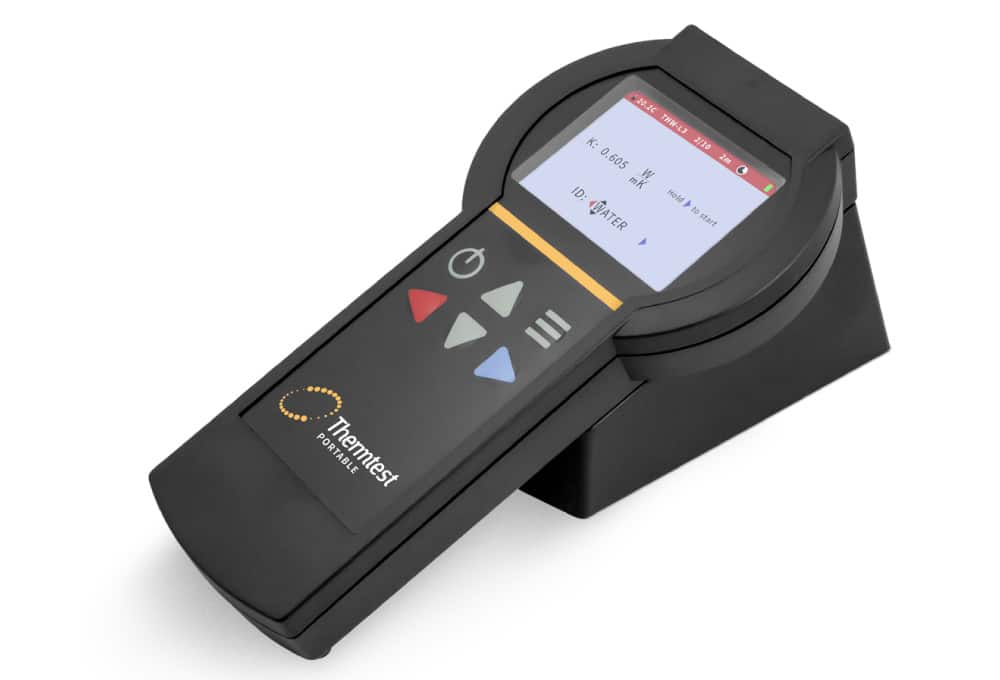
Picture 1. Thermtest MP-2 Thermal Conductivity Meter
Thermal conductivity MP-2 users benefit from the convenience and accuracy gained when using primary testing methods. The MP-2 controller auto-detects the connected sensor and loads corresponding testing parameters. Measurements are easily performed with the smart on-board software and transferred to computer with an included Windows utility program.
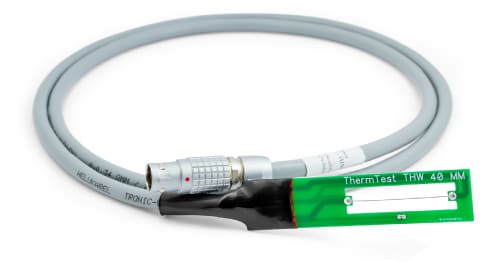
Picture 2. Thermtest THW-L3 sensor for use with the MP-2 portable meter.
The Transient Hot Wire – THW-L3 sensor is one of the many sensors offered with the Thermtest Portable Measurement Platform (MP-2). This sensor offers simple yet accurate measurements of liquids, pastes, and powders from 0.01 to 1 W/(m·K) via the transient hot wire method. The THW-L3 adheres with an internationally recognized standard of testing by complying with ASTM D7896-19. The THW-L3 has a 5% accuracy and a 2% reproducibility of measurement, making it a highly accurate and precise instrument for measuring the thermal conductivity of liquids, pastes, and powders.
The THW-L3 has a detect current setting that determines the appropriate amount of current to apply based on a test measurement. By reading the result of the test measurement, a current will be set that results in an optimal temperature rise of the sample during testing. Due to the compact size of the THW-L3 sensor, it can be inserted directly into the sample cell (15 ml), making sample setup very straightforward (Picture 3).
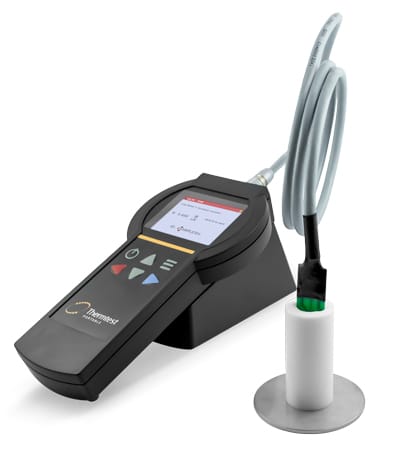
Picture 3: Measurement Platform-2 (MP-2) with the THW-L3 sensor and sample cell
Liquids containing salts are typically difficult to test for thermal conductivity due to high electrical conductivity (> 30 mS/cm). This application sheet outlines how a simple modification of the THW-L3 Sensor can be used to test electrically conductive liquids. The measurement of pure DIUF, and two mixtures of it (2 % and 35 %) with NaCl and measurements of pure Ethylene glycol and two mixtures of it (3.5 % and 7 %) with NaCl, will be measured using the Thermtest THW-L3 sensor.
The thermal conductivity of DIUF Water and Ethylene glycol and their mixtures with NaCl measured with a THW-L3 sensor from 10 °C to 40 °C. The DIUF water sample placed in the cell and then on a heating source to let the temperature stabilize at 20 °C. The power detected and then the sensor calibrated.
The temperature on the heating source set to 10 °C and when it was stabilized the power detect and set a measurement schedule. The same procedure repeated for the temperature measurements from 20 °C to 40 °C.
The thermal conductivity measurements were continued for the rest of the fluids, while the power was detected at each temperature step.
In Figure 1, the thermal conductivity measurements of DIUF Water and Water-Salt mixtures are given with the literature values [1, 2], while the deviations of our experimental data from the literature values are given in the same figure.
In Figure 2, the thermal conductivity measurements of Ethylene glycol and the EG-Salt mixtures are given. Additionally, the literature values [1] of the pure ethylene glycol is given for comparison.
Note: Before the beginning of the measurements, the PT100 sensor and the solder joints were covered with conformal coating. This procedure allows the accurate measurement of fluids with high electrical conductivity.
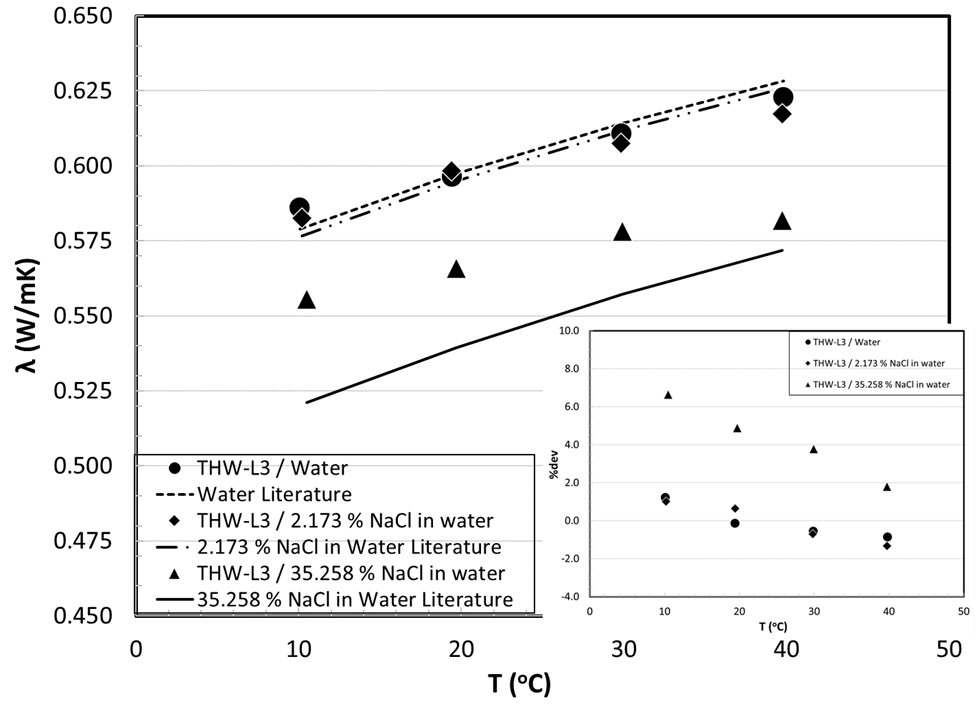
Figure 1. Thermal conductivity measurements of DIUF Water and Water-Salt mixtures as a function of temperature and the deviations from the literature data
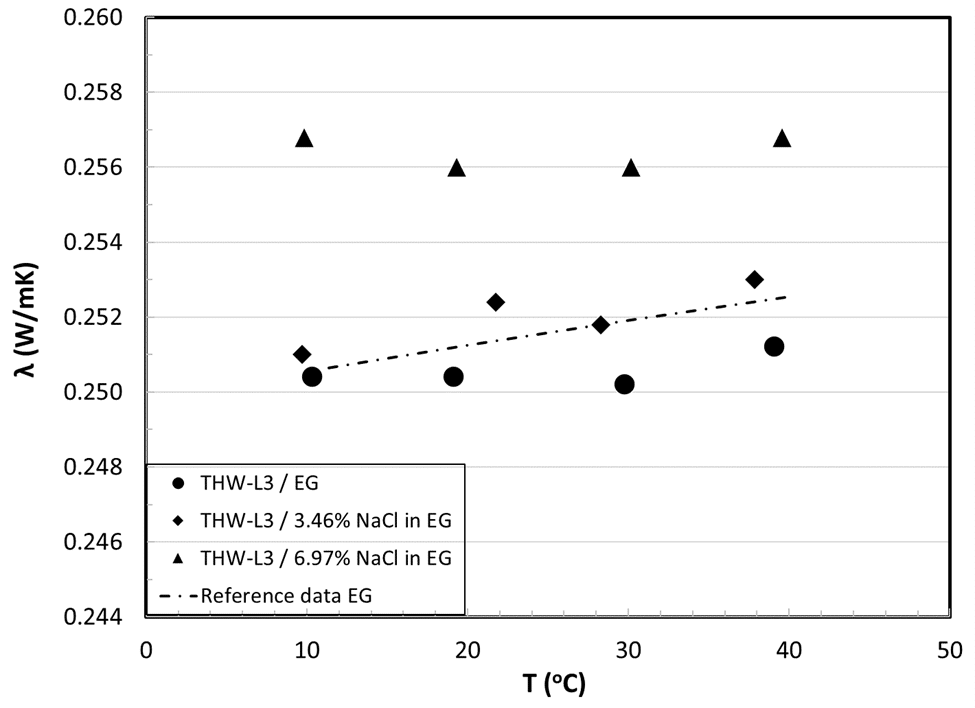
Figure 2. Thermal conductivity measurements of Ethylene glycol and EG-Salt mixtures as a function of temperature
1. Lemmon, E.W., Bell, I.H., Huber, M.L., McLinden, M.O. NIST Standard Reference Database 23: Reference Fluid Thermodynamic and Transport Properties-REFPROP, Version 10.0, National Institute of Standards and Technology, Standard Reference Data Program, Gaithersburg, 2018.
2. International Association for the Properties of Water and Steam, “Guideline on the Thermal Conductivity of Seawater”, July 2015, Stockholm, Sweden. http://www.iapws.org/relguide/Seawater-ThCond.pdf